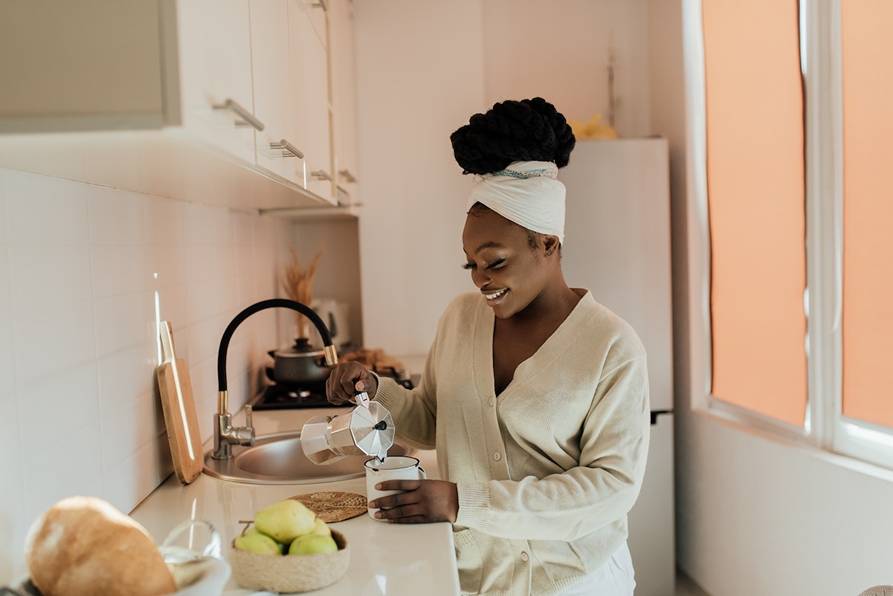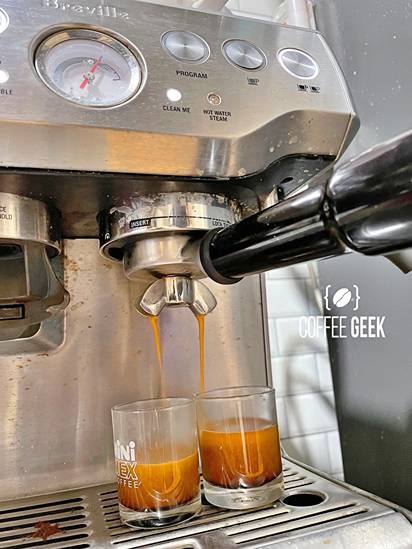Like many other countries, Cuba has its own coffee culture. Cuban coffee is known for being strong and flavorful, and it’s no surprise that it contains a good amount of caffeine.
But just how much caffeine in Cuban coffee?
We all know that caffeine is a stimulant that can have positive and negative effects on the body. Too much caffeine can lead to side effects like jitters, anxiety, and insomnia.
On the other hand, moderate amounts of caffeine can improve alertness and focus.
So, how much caffeine is in a cup of Cuban coffee? And how does that compare to a regular cup of coffee?
Read on to find out.
How Much Caffeine Is in Cuban Coffee?

A typical 8-ounce cup (240 ml) of Cuban coffee contains about 100 mg of caffeine. This is much higher than the average cup of coffee, which has 80-100 mg of caffeine.

Traditionally, Cuban coffee (Cafe Bustelo) is made with dark roasted beans (Cafe Cubano or Cafecito) that are ground very fine.
The coffee is then brewed using a Moka pot, which is a stovetop coffee maker.

The resulting brew is strong and concentrated, and it’s often sweetened with sugar. A small cup of Cuban coffee can pack a big caffeine punch!
This makes this brew one of the strongest coffee drinks out there. But, is it stronger than an espresso shot? I’ll get to that in a bit.
Why Is There So Much Caffeine in Cuban Coffee?

There are a few reasons why Cuban coffee contains so much caffeine. Here are some of the most important factors:
- Type of coffee beans
- Grind size
- Brewing method
I’ll go into more detail about each of these factors below.
Type of Coffee Bean Used to make Cuban Coffee
As I mentioned earlier, Cuban coffee is typically made with dark roasted beans. These beans have a higher level of caffeine than lighter roasted beans.
The science behind this is that the roasting process breaks down the coffee beans’ cell walls, which makes it easier for the caffeine to be extracted.
So, when you brew coffee with dark roasted beans, you end up with a coffee that has higher caffeine content.
The table below shows the caffeine content of different types of coffee roasts. As you can see, dark-roasted beans have about twice as much caffeine as light-roasted beans.
| Type of Beans | Caffeine Content (Mg per 8-Ounce Cup) |
|---|---|
| Light roasted | 80-100 |
| Medium roasted | 85-105 |
| Dark roasted | 95-110 |
As you can see, the type of bean used plays a big role in the amount of caffeine in the coffee.
Grind
The grind of the coffee beans also affects the caffeine content. If the beans are ground very fine, more of the caffeine will be extracted.
This is because a finer grind increases the surface area of the beans that come into contact with the water.
This allows for more of the caffeine to be extracted.
Cuban coffee is typically ground very fine, which explains why it has such a high caffeine content.
Brewing Method
Another factor that affects the caffeine content of coffee is the brewing method. The longer the coffee is brewed, the more caffeine will be extracted from the beans.
This is because caffeine is soluble in water, so the longer the beans are in contact with the water, the more caffeine will be extracted.
Cuban coffee is traditionally brewed using a Moka pot — a stovetop coffee maker.
This brewing method results in a very strong and concentrated coffee.
The Moka pot brewing method extracts more caffeine than regular other methods, such as drip brewing.
This explains why Cuban coffee has a higher caffeine content than other types of coffee.
Is Cuban Coffee Stronger Than Espresso?
When I talked about the caffeine content of Cuban coffee, I mentioned that it’s one of the strongest coffee drinks you can get.
But is it stronger than an espresso?
The answer is no. While Cuban coffee may be strong, it does not reach the same level of intensity as espresso.
Espresso coffee is brewed using 8-10 bars of pressure, which is much more than the 1-2 bars of pressure a Moka pot can produce.
This means coffee beans espresso is much more concentrated and intensely flavored than Cuban coffee.
However, if you’re looking for a strong coffee drink that is close to espresso but without the hefty price tag of an espresso machine, then Cuban coffee is a great option.
It may not be authentic espresso, but it will still give you a strong and flavorful cup of joe.
Bottom Line: How Many MG of Caffeine in Cuban Coffee?
A small shot of Cuban coffee has about 2 ounces (60 ml) of coffee and contains 25 mg of caffeine. A typical 8-ounce (240 ml) cup of American coffee has about 100 mg of caffeine.
So, Cuban coffee is about 4 times as strong as American coffee. If you are sensitive to caffeine or are trying to avoid it, you should limit your intake of Cuban coffee.
But if you love strong coffee and are looking for a real caffeine kick, Cuban coffee is the way to go. Just be sure to enjoy it in moderation.
FAQs
Is Cuban Coffee High in Caffeine?
Yes, Cuban coffee is high in caffeine. A typical cup of Cuban coffee has about 100mg of caffeine, which is more than double the amount of caffeine in a cup of regular coffee. Cuban coffee is also more potent than regular coffee, so it’s important to drink it in moderation.
Is Cuban Coffee Strong?
Cuban coffee is typically very strong, due to the dark roasts used and the small serving sizes. The coffee beans are roasted until they are almost black, then ground very fine and brewed with boiling water. This results in a small, but extremely strong cup of coffee.
How Much Coffee Beans Do You Put In Cuban Coffee?
There is no definitive answer to this question as it depends on personal preferences. However, a good rule of thumb is to use 1 tablespoon (or around 7 grams) of coffee beans per fluid ounce (or around 30 milliliters) of water. So, for an 8-ounce cup of coffee, you would use 8 tablespoons (or around 56 grams) of ground coffee beans.
How Much Caffeine Is in a Colada Coffee?
A colada coffee typically contains around 3 shots of espresso, which means it has about 90 mg of caffeine. However, this can vary depending on the coffee beans used and the espresso’s strength.
Is Espresso Cuban Coffee Stronger Than Regular Coffee?
Yes, Cuban coffee is about 2 times stronger than regular coffee. This is because you make Cuban coffee with Moka Pot coffee, which Cuban has a higher concentration of caffeine than regular brewed coffee.
How Much Caffeine in a Shot of Cuban?
A shot of Cuban coffee typically contains about 25 mg of caffeine. However, this can vary depending on the coffee beans used and the brewing method.
Is Cuban Coffee Stronger Than Espresso?
No, Cuban coffee is not stronger than espresso. Although both are made with dark roast beans and brewed using intense pressure, an espresso machine brews at 8-10 bars of pressure, which is 5-10 times more than a Moka pot. As such, the coffee produced from an espresso machine is stronger than that produced from a Moka pot.




